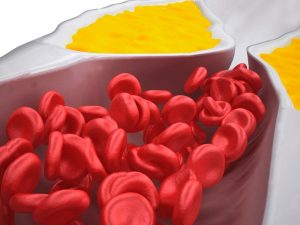Alzheimer’s disease transforms the very being of a person. It disorients and confuses the mind. Alzheimer’s is a variety of dementia that affects the brain, diminishing intellectual functions, leading to memory, thinking, behavior and character problems. People who experience this disease suffer a total change in their personality tend to become depressed or irritated. They stop being able to follow directions, and become confused and disoriented in time and space.
In the initial stages of the disease, patients with Alzheimer’s can feel lost despite being in familiar places; judgment gets affected and they may not know who they are. The Alzheimer’s is a progressive and degenerative disease that, over time, makes it harder to perform daily activities. It is an irreversible and incurable condition that was first defined in 1907 by the German physician Alois Alzheimer. It gradually destroys neurons in the brain which communicate information to the body.
Alzheimer’s disease can affect anyone. It also affects men and women, although the incidence in women is higher. According to Alzheimer’s Association, in the United States 5.7 million people are living with Alzheimer’s disease and by 2050 the number will increase to 14 million. It is the sixth leading cause of death in the country; it kills more people than breast cancer and prostate cancer combined. According to the Alzheimer’s Association, every 65 seconds someone in the US develops Alzheimer’s.
Senile Dementia and Alzheimer’s
The two conditions are not the same. Dementia refers to the loss of mental capacity, where the primary functions of behavior and knowledge of the world are impaired. A person with dementia may hallucinate, believe they are in another time or talk to people who are not there. Its causes may be old age or diseases such as Parkinson’s, Pick’s disease, Down syndrome, tumors or vascular dementia. Alzheimer’s is the most common cause of dementia.
Some forms of dementia can be treated. Although there is no cure for Alzheimer’s, it is possible to control with drugs and non-drugs treatments. A patient diagnosed with Alzheimer’s can expect to live up to another 10 years.
The Brain and Alzheimer’s
The brain executes tasks through individual cells; the brain contains about 100 billion neurons with more than 100 trillion connections. That dense network of communication is known as the neuron forest in which the basis of memories, thoughts and feelings are formed. Neurons are a type of cells that Alzheimer’s destroys.
The cells send signals that form memories and thoughts through an individual neuron, representing a minuscule electrical charge. The neurons then connect to each other through synapses; when one of the electrical charges reaches the synapse, transmission begins of tiny chemical impulses, known as neuroregulators, that carry the signals to other cells. Alzheimer’s disease interrupts the traveling process of electrical charges between cells and the activity of neuroregulators.
Alzheimer’s disease intervenes and changes the entire brain, causing the death of neurons and the loss of tissue. So, over time, the brain decreases in size, affecting all its functions.
- The brain of a person with Alzheimer’s suffers from shrinkage of the cortex, which damages the areas that allow thinking, planning and remembering.
- In the advanced stage of Alzheimer’s, the size of the hippocampus decreases severely; this area is responsible for memories.
- Fluid-filled spaces in the brain, known as ventricles, become larger.
Alzheimer’s Progression
It is not known what precisely causes the death of cells and the loss of tissue, but the formation of plaque and tangles are the main culprits.
Plaque and tangles spread through the cortex in the progression of Alzheimer’s disease. The progression speed varies considerably. People who have Alzheimer’s tend to live an average of eight years after diagnosis, although some live with it up to 20 years. The cycle will depend on the age of the person and the presence of other medical conditions. Stages of Alzheimer’s disease include:
- Early Stage
Changes in brain activity can begin 20 years before diagnosis. Medical tests cannot detect symptoms, and plaque and tangles start to form in areas involved with learning and remembering, thinking and planning.
- Mild or Moderate Stage
This stage can last from two to 10 years. Plaque and tangles begin to inhabit the area of the brain critical for memory, and develop even more in the area that affects thinking and planning. Memory and reasoning problems occur and interfere with work and social life. People in this stage become confused and may have problems managing money, expressing themselves and organizing their thoughts.
At this stage, it is possible to diagnose Alzheimer’s disease. Plaque and tangles begin to invade areas of the brain used to speak and understand speech, and for awareness of surrounding objects. As this stage develops, personality and behavior changes occur, and recognition of friends and family fails.
- Severe Stage
By this point, the damage in the cortex is too much. The brain shrinks dramatically. Patients lose the ability to communicate, recognize family and loved ones, and are no longer able to take care of themselves.
Is Alzheimer’s Disease Genetic?
Uncountable studies made to understand Alzheimer’s discovered that many factors influence in the beginning and progress of the disease. And, genes do play a quite important role there. There are two types of Alzheimer that help to see its genetic origin:
- The Late-Onset Alzheimer’s disease. It occurs in people in the mid-60s or later. It can include genetic, environmental and lifestyle combination factors. There are no genes that directly cause this kind of Alzheimer but there is one gene in a human chromosome that can increase the risk.
- The Early-Onset Alzheimer’s disease. It appears in people between 30s to mid-60s. Only 10 percent of people with Alzheimer’s develop it at that age period. This type of Alzheimer appears because of mutations on some human chromosomes. Any of those mutations make easy to form plaques. As explained before, something characteristic in Alzheimer’s disease.
Alzheimer’s disease is a health crisis of one person. However, it is still a family problem. When diagnosed with this condition, offspring and close relatives are more likely to develop the disease. If a close relative gets an Alzheimer’s diagnosis, there are tests people may take to discard the chances and habits that they may adopt to lower the possibility of developing Alzheimer’s.
Studies made on family medical records revealed that if a close relative gets diagnosed with Alzheimer’s, the risks of developing the disease increases by 30 percent. Generally, people after 65 years old have a 2 percent annual risk of developing Alzheimer’s; so each year two out of 100 people with 65 years old will develop the disease. And so on, Alzheimer’s family history increases the 2 percent annual risk by 30 percent to 2.6 percent annual risk of developing Alzheimer’s.











